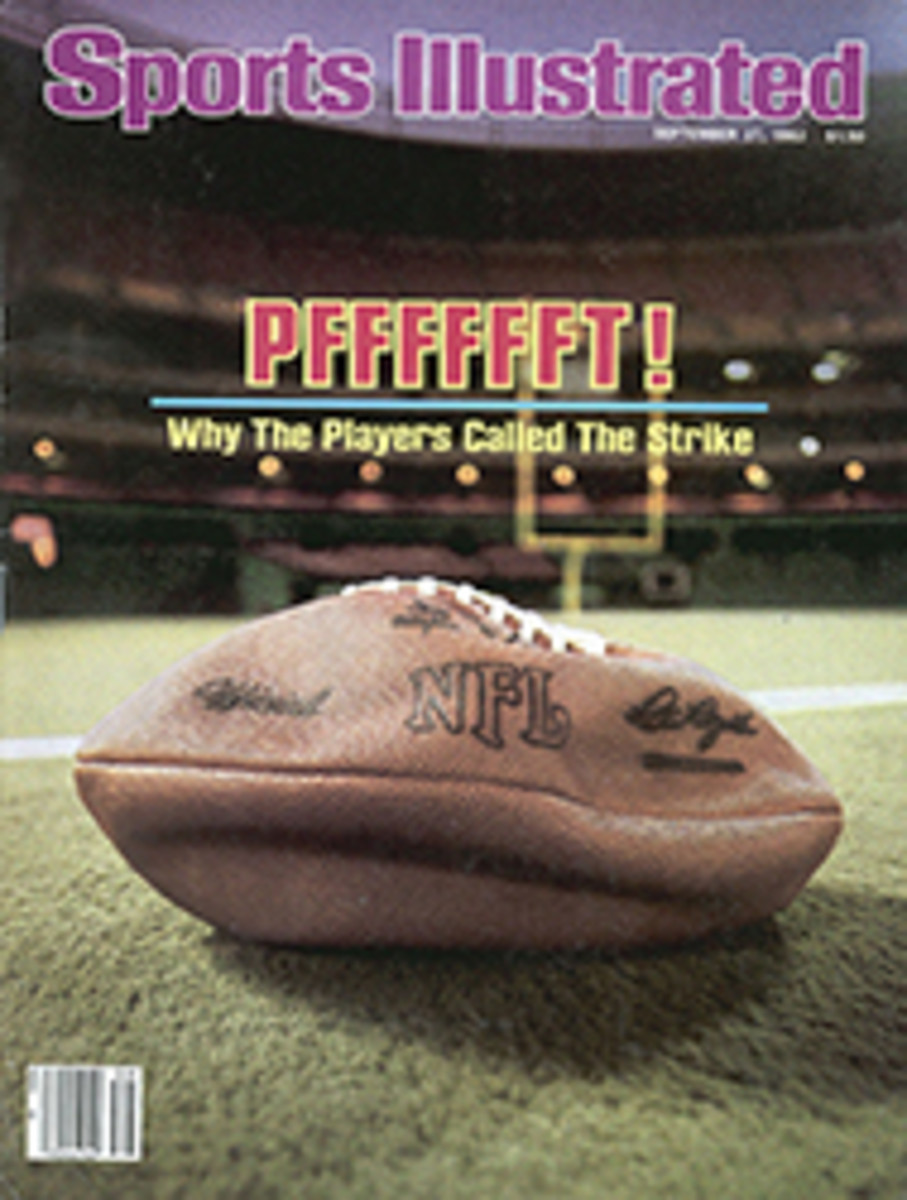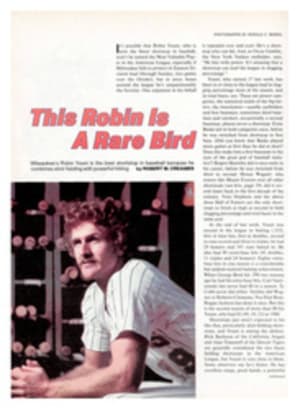
Dunking For The Big Apple
The water—"
The cry came from a swimmer in New York's grungy Harlem River, but it was a request for water, not a complaint. The Harlem was cleaner than expected on Sept. 14. The First Annual Manhattan Island Swimming Marathon wasn't going to kill anyone.
The 31.3-mile race had begun at 8:30 a.m., at 90th Street and the East River, appropriately enough hard by a large scow mounded high with garbage. The East River meets the Harlem about half a mile upstream, and there the tide would turn in their favor and carry the 12 swimmers—10 men and two women—nine miles to a third river, the Hudson. Catch the tides. That's how one circumnavigates the Big Apple.
It was 9:51 when the swimmer asked for water. His name was David Horning, a 34-year-old marketing consultant from Berkeley, Calif. In 1969 he had suffered two epileptic seizures. No one in New York knew that. And no one knew that Horning's doctor had warned him not to swim again. Now here he was, swimming at the toes—drafting is the term—of the leader, Todd Bryan, a 31-year-old environmental planner from Providence.
At 10:30 they stopped to feed, treading water as they did so: On a rise to the north, at the Marble Hill railroad station, a group of commuters stood and looked down, like tourists at Marineland. Horning turned to Bryan and said, "How're you doing?" Bryan replied, "Very good. How're you doing? Want to lead?" "No," Horning said, "you're having too good a time." Actually, Bryan wasn't having a good time. He was starting to look a little peaked. Drafting can cut a swimmer's stroke rate and energy expenditure by up to 10%, so the 155-pound Bryan was working harder than the 190-pound Horning. As he swam into the Hudson, Bryan, leading, was like a pilot fish trailed by a shark.
At 11:06 they were nearly 2½ miles downstream, having caught another tide. The two had stuck together in their little symbiosis for an hour and 55 minutes when, suddenly, the shark started edging up on the pilot fish. By 11:13, when they stopped beneath the George Washington Bridge, the two were head to head.
Bryan asked, "How're you feeling?" Not doing, as he had asked before. It was easy to imagine the answer Bryan was hoping for, but Horning said, "Great," as he grinned, gulped Pepsi-Cola and downed a second banana. Bryan looked troubled.
Horning said to him, "Hey, I don't even know your name," as seemed only courteous, after haunting the man for nearly two hours.
"Todd," Bryan answered as he tried to eat a peach.
"I'm Dave," Horning said, and off he headed down the Hudson. Bryan vomited up the peach and followed.
For 18 minutes they swam neck and neck, Horning breathing to his right, Bryan to his left, and with each stroke they stared into each other's eyes. Suddenly, Bryan stopped, announcing to his boat, "I'm getting sick." Horning asked him, "Want to follow me?" It was as if Sonny Liston had said to Floyd Patterson, "You want to get up? I won't hit you for a while."
They swam on, Bryan finally accepting Horning's offer and drafting, but only for another 200 yards. At 11:43, three hours and 13 minutes into the race, Bryan stopped and said, "I'm sick and I've got cramps in my thigh." He clambered into the boat, and Horning went on alone.
"I was trying my best to keep him from following me," Bryan said later, "but the only thing I could do was urinate, and that didn't seem to bother him."
Nothing did. Nothing ever has.
In 1969, when Horning was a Cal Berkeley junior, he broke his back skiing. The epilepsy had been diagnosed a year earlier, and the doctor said, Horning recalls, "that my future in all sports would have to be limited." So each of the next two winters, back on the slopes, Horning broke a leg, and another doctor told him, "You'll never run again." In 1971 Horning graduated with a degree in marketing and finance, and in 1977, deciding he was out of shape, he started running 30 miles a week. Seven months later he completed the New York Marathon in 2:47. In the next two years he ran four more marathons and then he discovered triathlons. He has won four of those swim-bike-run ordeals, twice setting course records in the Escape From Alcatraz event, and three days before his Manhattan swim he finished fifth in another on Long Island. But until New York, his longest swim had been seven miles, with an ebb tide, from San Francisco's Bay Bridge to the Golden Gate.
Now, at the southernmost tip of Manhattan, 24 miles along, he had been in the water for five hours and 10 minutes and was 29 minutes ahead of the record pace for the course, with his nearest competition more than a mile behind. Trouble was, the tide wouldn't start turning up the East River for another 29 minutes. By the time he reached the United Nations' complex, at East 42nd Street, Horning was six minutes behind the record pace.
By the East 50s the tide was tearing along the seawall at five knots, and Horning began passing surprised joggers ashore. He had left his chance for the record (seven hours, 14 minutes and 44 seconds) in the outgoing tides downtown, and his winning time was 7:25.45.
As he struggled out of the water, Horning's face, where his scuba-diver's mask had pressed down on it for more than seven hours, was a frightening mass of purplish-yellow ridges. He rose on wobbling legs and asked, rhetorically, "Why am I so tired?"
The very obvious answer would seem to be "Why not?"
PHOTO
PHOTO
Last man—or woman—in is a rotten egg.
TWO PHOTOS
Bryan and Horning were nose-to-nose until Horning peeled off to munch his banana in peace.
PHOTO
Ugh, says Horning, the only man to complete the wet and dry New York marathons.

